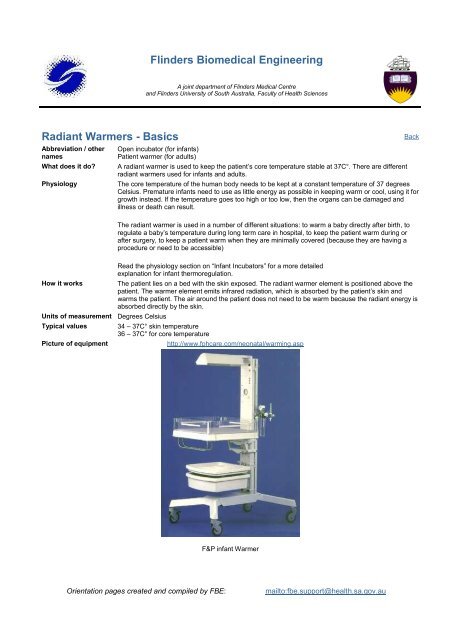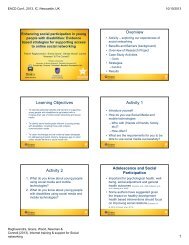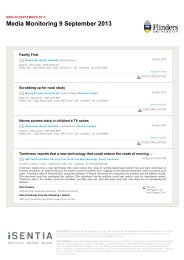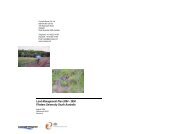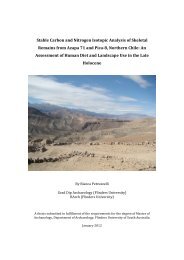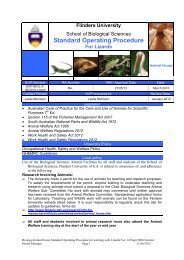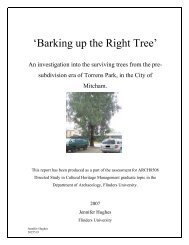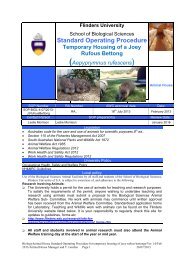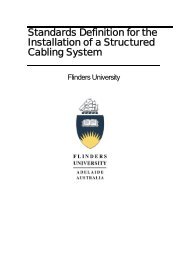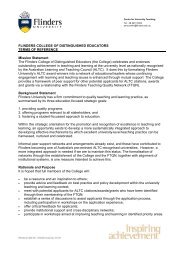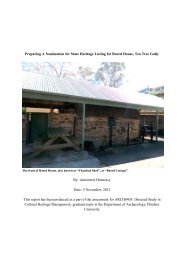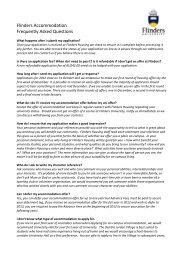Flinders Biomedical Engineering Equipment Orientation
Flinders Biomedical Engineering Equipment Orientation
Flinders Biomedical Engineering Equipment Orientation
You also want an ePaper? Increase the reach of your titles
YUMPU automatically turns print PDFs into web optimized ePapers that Google loves.
Radiant Warmers - Basics<br />
Abbreviation / other<br />
names<br />
<strong>Flinders</strong> <strong>Biomedical</strong> <strong>Engineering</strong><br />
A joint department of <strong>Flinders</strong> Medical Centre<br />
and <strong>Flinders</strong> University of South Australia, Faculty of Health Sciences<br />
Open incubator (for infants)<br />
Patient warmer (for adults)<br />
What does it do? A radiant warmer is used to keep the patient’s core temperature stable at 37C°. There are different<br />
radiant warmers used for infants and adults.<br />
Physiology The core temperature of the human body needs to be kept at a constant temperature of 37 degrees<br />
Celsius. Premature infants need to use as little energy as possible in keeping warm or cool, using it for<br />
growth instead. If the temperature goes too high or too low, then the organs can be damaged and<br />
illness or death can result.<br />
The radiant warmer is used in a number of different situations: to warm a baby directly after birth, to<br />
regulate a baby’s temperature during long term care in hospital, to keep the patient warm during or<br />
after surgery, to keep a patient warm when they are minimally covered (because they are having a<br />
procedure or need to be accessible)<br />
Read the physiology section on “Infant Incubators” for a more detailed<br />
explanation for infant thermoregulation.<br />
How it works The patient lies on a bed with the skin exposed. The radiant warmer element is positioned above the<br />
patient. The warmer element emits infrared radiation, which is absorbed by the patient’s skin and<br />
warms the patient. The air around the patient does not need to be warm because the radiant energy is<br />
absorbed directly by the skin.<br />
Units of measurement Degrees Celsius<br />
Typical values 34 – 37C° skin temperature<br />
36 – 37C° for core temperature<br />
Picture of equipment http://www.fphcare.com/neonatal/warming.asp<br />
F&P infant Warmer<br />
<strong>Orientation</strong> pages created and compiled by FBE: mailto:fbe.support@health.sa.gov.au<br />
Back


